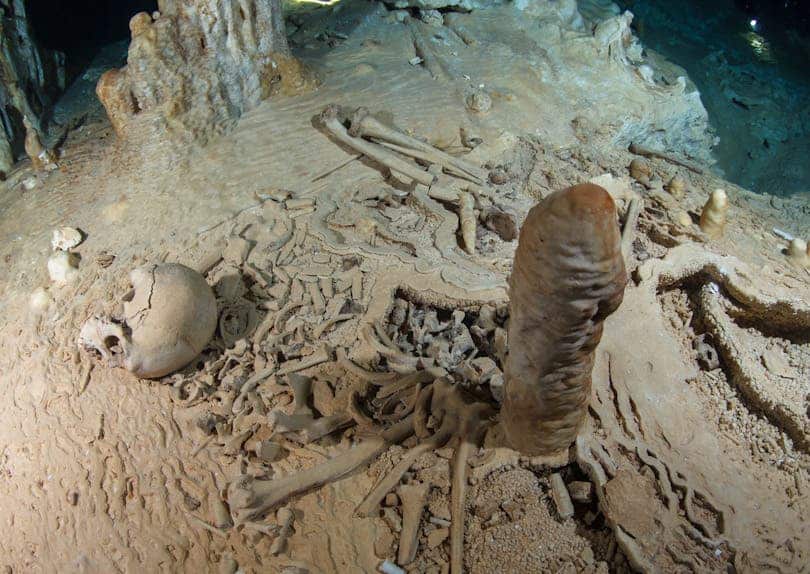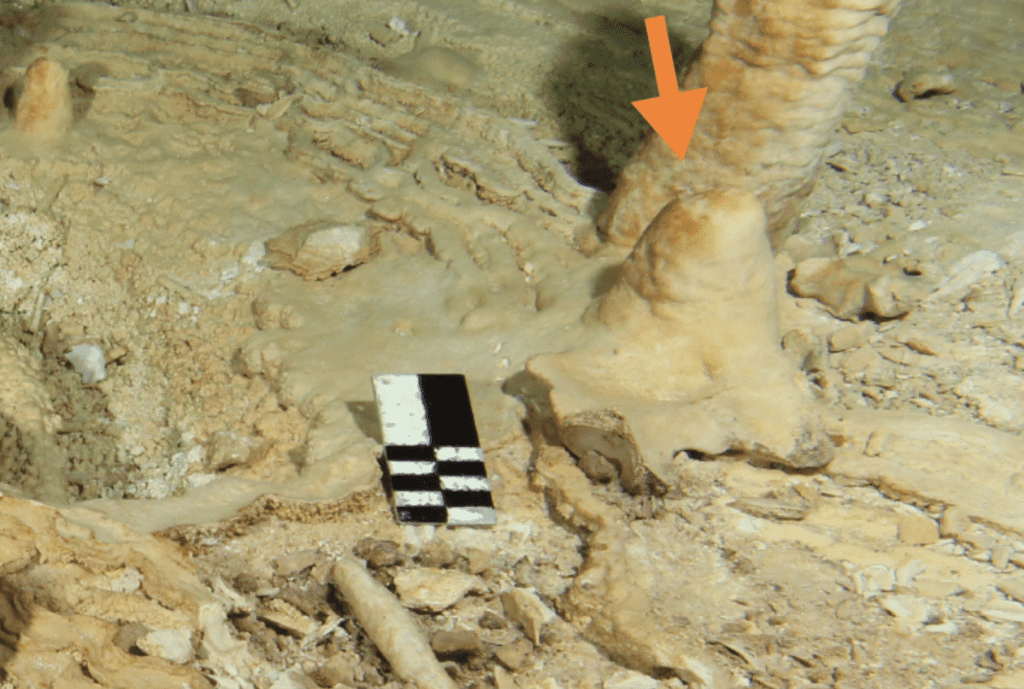In February 2012, researchers discovered a human skeleton in an underwater cave in Mexico. Their joy, however, was short-lived. Just days after photos were made public, unknown divers plundered the cave, stealing the complete skeleton and everything else they could find. They were never identified, the skeleton never located. Still, researchers managed to date a bone, based on measurements conducted on a stalagmite in the cave. The research findings have now been published in PLoS ONE.

Prehistoric human skeleton in the Chan Hol Cave near Tulúm on the Yucatán peninsula prior to looting by unknown cave divers. Picture: Tom Poole, Liquid Jungle Lab.
Settling a settlement debate
The earliest settlement in North America is still a matter of debate among anthropologists and archaeologists. The classical hypothesis is that the first migration took place 12,600 years ago through an ice-free corridor between retreating North American glaciers, over the Bering Strait which was still covered by an ice. That hypothesis is recently coming under more and more fire, with evidence from both North and South America suggesting that a migration took place earlier. However, that evidence is mostly hearths and artifacts — it’s extremely rare to find any human skeletons older than 10,000 years in the Americas. This is why this particular finding might be so important.
“The bones from the Chan Hol Cave near the city of Tulúm discovered five years ago represent one of the oldest finds of human bones on the American continent and are evidence of an unexpectedly early settlement in Southern Mexico,” says Prof. Wolfgang Stinnesbeck, who is an earth scientist at Heidelberg University.
The skeleton was found in a vast system of underwater carbonate bedrock caves filled alternatively with salt and sweet water. These caves, located near Tulúm on the Yucatán Peninsula, have proven a valuable trove for researchers. They contain archaeological, palaeontological and climatic information hidden there from the time before the flooding, which is extremely well preserved, according to Stinnesbeck.
“When my Mexican colleagues Arturo Gonzalez and Jerónimo Avilés showed me the first photos of the Chan Hol site, I immediately knew that we had something special,” says Stinnesbeck.
This is why, when the skeleton was stolen, it hurt even more. But scientists didn’t give up. They still had one bone to analyze — a pelvic bone that had since grown a stalagmite, a rock formation rising from the floor of a cave due to material deposited on the floor from ceiling drippings. Stalagmites are the floor counterpart of ceiling stalactites.
Left them a bone
Dating the bone was no easy feat, for all the potential it yielded. Bones this old have no more collagen, which is what is commonly used for dating bones. So instead, researchers took a different route: they dated it like a rock, not like a bone — something which was possible only thanks to the unique environment of the bone. They used the uranium, carbon, and oxygen isotopes in the bone itself and in the stalagmite that had grown through it. They then analyzed the oxygen and carbon isotope ratios, which are directly related to climate and precipitation data. This can be correlated to existing data, so the age of the stalagmite was estimated, and from it, the age of the bone. Researchers say it is at least 13,000 years old, which would add another nail in the coffin of the classic settlement theory.
More evidence would likely settle this debate once and for all, since this is still an indirect dating method, and more evidence likely lies in or around the cave system. But the area is threatened by growing tourism and urbanization in the area. It’s no coincidence that the skeleton was stolen after only a few photos, and researchers fear what is to happen to the cave if it is left unprotected. Whatever evidence may lie there could be gone forever.
This study fits in neatly with previous findings from the Paisley Cave in Oregon and Monte Verde, Chile, where there is evidence of early settlements.
Journal Reference: Wolfgang Stinnesbeck et al — The earliest settlers of Mesoamerica date back to the late Pleistocene.










